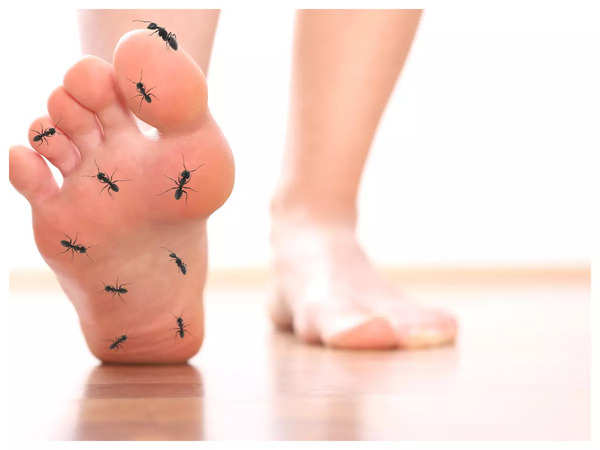Dr. Ashok Kumar Jhingan, Senior Director, Center For Diabetes, Thyroid, Obesity & Endocrinology, BLK Max Super Specialty Hospital reports that approximately 15 to 25% of patients with diabetes mellitus will develop a diabetic foot ulcer during their lifetime. We see 3-4 patients with diabetes related foot problems every day in our OPD.
What increases the chances of a foot amputation is not only a diagnosis of diabetes, but also two related complications: peripheral artery disease (PAD) and diabetic neuropathy. “PAD can narrow the arteries that carry blood to your legs and feet and make you more likely to get ulcers (open sores) and infections. When you don’t have good circulation, it can also make those things heal more slowly.
Dr. Sachin Kumar Jain, Head of Endocrinology Department at Amrita Hospital in Faridabad further adds, “Patients should not ignore long-lasting numbness, hard shiny skin, hair loss from the feet or legs or swelling of the feet or legs, problems walking, any ulcers/pains/bunions/calluses, if any ‘is an unpleasant or unpleasant smell.“
Why does diabetes make feet vulnerable?
Uncontrolled diabetes can damage the nerves and even blood vessels in the body. Dr. Ashok explains how. If your nerves are damaged, you may not feel pain, heat, cold, sharp objects, or other symptoms of ulcers or infections. If you have neuropathy in your feet, you may be walking around with a rock in your shoe all day and not notice it. This means that you could get a bad cut and not notice it until it gets infected. Ulcers form due to a combination of factors, such as lack of sensation in the foot, poor circulation, foot deformity, irritation (such as friction or pressure), and trauma, as well as the duration of the diabetes. Additionally, patients with long-term diabetes can develop neuropathy, which is basically a reduced or complete lack of ability to feel pain in the feet due to nerve damage caused by high blood glucose levels over time. Nerve damage can often occur without pain, and you may not even be aware of the problem. Your podiatrist doctor can test your feet for neuropathy with a simple, painless tool called a monofilament, he adds.
The risk of foot amputation
Many diabetic patients end up having one or more toes, balls of feet or lower legs amputated because the infection is not under control or the ulcers or wounds do not heal. It leads to further cellulitis, fasciitis, and osteomyelitis (neuropathy and vascular disease contribute to this), and due to arterial disease, neither nutrients nor antibiotics nor drugs reach the local site in adequate quantities. Multiple amputations can occur over a period of time, shares Dr. Sachin.

Check your feet every day!
So what should people with diabetes do? It is extremely important for them to check their feet every day.
Check Your Feet: Check it once a day for blisters, cuts, cracks, sores, redness, tenderness, or swelling. If you have trouble reaching your feet, use a hand mirror to see the bottoms of your feet. Put the mirror on the floor if you can’t hold it, or ask someone to help you.
Wash your feet every day: Wash your feet with warm (not hot) water once a day. Gently dry them, especially between your toes. Use a pumice stone to gently scrub the skin where calluses form easily.
Put baby powder or cornstarch between your toes to keep the skin dry: Use a moisturizing cream or lotion on the tops and bottoms of your feet to keep the skin soft. Preventing cracks in dry skin helps keep bacteria from entering.
Do not remove calluses or other foot lesions yourself: To avoid injuring the skin, do not use nail files, nail clippers, or scissors on calluses, calluses, or warts. Do not use chemical wart removers. Consult your provider or foot specialist (podiatrist) to have any of these problems removed.
Trim toenails carefully: Trim toenails straight. Carefully file the sharp edges with a nail file. Get someone to help you if you can’t cut your nails yourself.
Don’t keep your feet warm: Do nothing to warm your feet. Do not use very tight socks and wear comfortable footwear.
